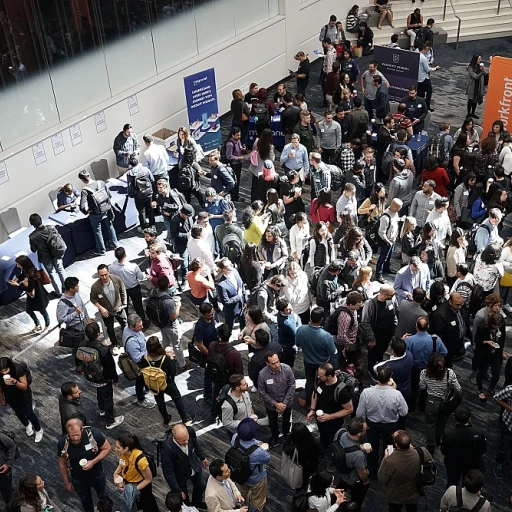
The Rise of AI in Recruitment
The Shift Towards AI-Driven Hiring
The landscape of recruitment is witnessing a profound transformation with the integration of artificial intelligence (AI). AI is reshaping how companies identify and attract top talent by optimizing various stages of the hiring process. From screening resumes to shortlisting potential candidates, AI-driven systems are becoming indispensable tools for hiring managers. AI-powered applicant tracking systems (ATS) facilitate a more streamlined and efficient recruitment process. These systems enable companies to sift through thousands of resumes, using specific resume keywords to match job descriptions with the most suitable candidates. By embedding relevant keywords in your resume, you can significantly enhance your chances of passing the initial resume screening process. The adoption of AI in recruitment isn't just about enhancing efficiency; it's also about ensuring that the process is objective and unbiased. By leveraging data-driven insights, AI helps in minimizing human error and personal biases, providing a level playing field for all applicants. Moreover, understanding how AI systems operate can provide job seekers with a competitive edge. Familiarizing yourself with the nuances of AI in the job search process is crucial, whether it's understanding the role of resume keywords or crafting an ATS-friendly resume. For more insights into how AI is shaping new career paths, check out our detailed exploration on emerging careers with AI.Decoding Hiring Bot Keywords
Understanding the Language of AI in Hiring
Navigating the intricacies of applicant tracking systems (ATS) is vital for today's job seekers. Hiring managers increasingly rely on these technologies to streamline the recruitment process, meaning candidates must be astute about resume keywords. Understanding how these systems parse through piles of resumes will significantly enhance your chances of making it to the next round. Job candidates should start by analyzing the job description closely. Each posting contains specific skills and experiences that are crucial for the role. Integrating the right keywords from these descriptions into your resume is essential. This tactic not only aids in optimizing your resume for the ATS but also ensures hiring managers see how well you match the position. Creating an ATS-friendly resume involves:- Incorporating relevant keywords seamlessly into your experience and skills sections.
- Avoiding oversaturation of keywords, which might lead systems to flag your resume as irrelevant.
- Using a clean resume template, which enhances readability for both humans and algorithms.
Crafting Resumes for AI Screening
Revamping Your Resume for AI Efficiency
With the explosion of AI in recruitment, traditional resumes need a facelift to stand out in this digitally-driven environment. Let's delve into how to fine-tune your application to appeal to Applicant Tracking Systems (ATS) and hiring managers alike. First and foremost, it’s crucial to tailor your resume to the specific job description you're applying for. By aligning your experience and skills with the listed responsibilities, you boost your chances of passing the initial filter set by ATS. Carefully selecting relevant keywords from the job description and incorporating them into your resume can help ensure a successful match. Adjusting your resume layout to be ATS-friendly is also vital. Avoid complex formats that include intricate graphics or unusual fonts, as they might confuse the tracking systems, causing your resume to be misinterpreted or, worse, discarded. Opt for a simple resume template that emphasizes clarity and readability. Additionally, leveraging resume keywords effectively enhances your visibility in the hiring process. Think of your resume as a tool for a job search that can either open or close doors depending on your choice of words. Include industry-specific terms and skills naturally within your descriptions that showcase your qualifications. Yet, be mindful not to cram your resume with keywords at the expense of coherent narrative. Maintaining a human touch by highlighting your achievements and experiences is crucial in resonating with both the technological and human aspects of the hiring process. This balance not only optimizes your resume for ATS but also presents you as an outstanding candidate during resume screening by hiring managers. Navigating this technological landscape can seem daunting, but by embracing these strategies, you can remain competitive in the ever-evolving job market. Interested in learning more about technological advancements impacting careers today? Explore further insights here.Common Mistakes to Avoid
Avoiding Pitfalls in Navigating AI-driven Hiring Systems
The integration of AI in recruitment transforms how candidates apply for jobs, but it also introduces challenges that job seekers must overcome. One primary consideration is ensuring your resume doesn't fall through the cracks of Applicant Tracking Systems (ATS) during the hiring process. These systems automatically screen resumes for relevant keywords to match job descriptions, which means crafting an ATS-friendly resume is crucial. Unfortunately, many candidates tend to make common mistakes that can impede their chances. Here are some pitfalls to avoid:- Keyword Overloading: While it's essential to include relevant keywords strategically, overloading your resume with them can diminish readability and signal an attempt to game the system. Keywords should flow naturally within the context of your skills and experiences.
- Excessive Formatting: Fancy designs and intricate layouts might appeal to human hiring managers, but they often confuse tracking systems. Stick to a simple, clean resume template that ATS can easily parse.
- Neglecting Job Descriptions: Tailoring your resume to align with the specific job description is critical. Utilize the exact keywords outlined by the employer, reflecting the skills and experience they're seeking.
- Ignoring File Formats: Ensure your resume is in a format that ATS can read, such as a PDF or Word document. The wrong format can result in your resume being skipped over entirely.
Tools and Resources for Job Seekers
Enhanced Career Search: Tools and Resources
In the ever-evolving job market, staying ahead of the competition becomes crucial. Leveraging the right tools and resources can significantly boost your job search efforts. While understanding hiring bot keywords is essential, there are additional resources that can enhance your application process. Firstly, make use of modern applicant tracking systems (ATS) to ensure your resume is seen by hiring managers. These systems streamline the hiring process by screening resumes for specific keywords, so crafting an ATS-friendly resume is paramount. Opt for ATS resume templates that prioritize readability and match job descriptions, thereby optimizing your application for systems ATS. To identify the right keywords and phrases to use, consider platforms that analyze job descriptions and extract relevant terms. This resource greatly aids in tailoring your resume keywords to align with what hiring managers are seeking. Matching your skills and experience to the job description can enhance your candidacy. Invest in tools that aid in resume management, providing suggestions for keywords resume alignment, and assessing ATS compatibility. Look for software that offers a job search tracker, which can help organize applications to various roles, ensuring no opportunity is missed. Additionally, platforms offering AI-driven tracking systems can streamline the process of finding job openings tailored to your preferences and skills. These technologies help identify opportunities you might not have discovered otherwise. Incorporate these tools and resources into your job search strategy to navigate the modern hiring landscape effectively. By matching your skills and experiences with tailored resume keywords and employing beneficial tech resources, you enhance your chances of standing out in a crowded job market.The Future of AI in Hiring
The Growing Influence of AI in the Hiring Process
The role of Artificial Intelligence in hiring is continually evolving as technology advances. This evolution is reshaping the landscape of recruitment, emphasizing the importance of understanding how candidate resumes interact with Applicant Tracking Systems (ATS). Future job searches will likely see AI taking an even more significant role, streamlining the process for both hiring managers and candidates.
As these systems become more sophisticated, they will not only filter resumes based on resume keywords but also predict candidate success and job fit more accurately. This implies that job seekers need to optimize their ATS resume more meticulously, ensuring that relevant keywords are strategically placed to match the specific job description. The integration of machine learning models means that AI systems will improve over time, learning from each hiring cycle to better identify the right fit through enhanced resume screening methods.
Integration with Other Technologies
Moreover, AI will increasingly integrate with other technologies such as cloud-based platforms and Large Language Models, enhancing the effectiveness of the applicant tracking systems. This integration will lead to systems that not only match job seekers with roles but also offer personalized career advice based on their skills and experiences. Companies looking for skills and experience relevant to their needs will be able to leverage AI to pinpoint candidates' competencies with greater precision, streamlining the recruiting process.
Preparing for an AI-Dominated Future
Job seekers must stay abreast of these technological changes by adapting their sales pitch documented in their resumes. This includes employing a friendly resume template that harmonizes with the systems' algorithms and maintains relevance in the keywords job recruiters are looking for. As AI becomes an integral part of the human resources management processes, candidates should focus on enhancing their digital literacy and remain informed about trends in AI.
For a deeper dive into how AI is impacting current employment trends, visit our dedicated page.












